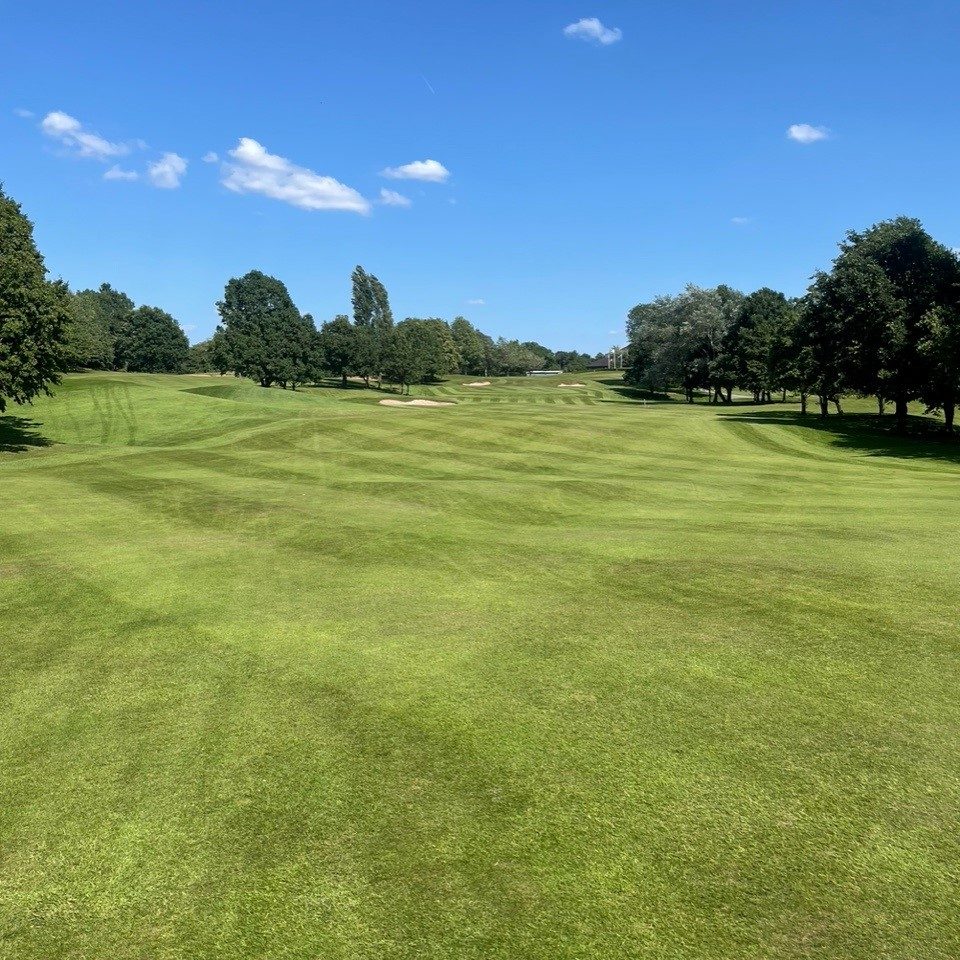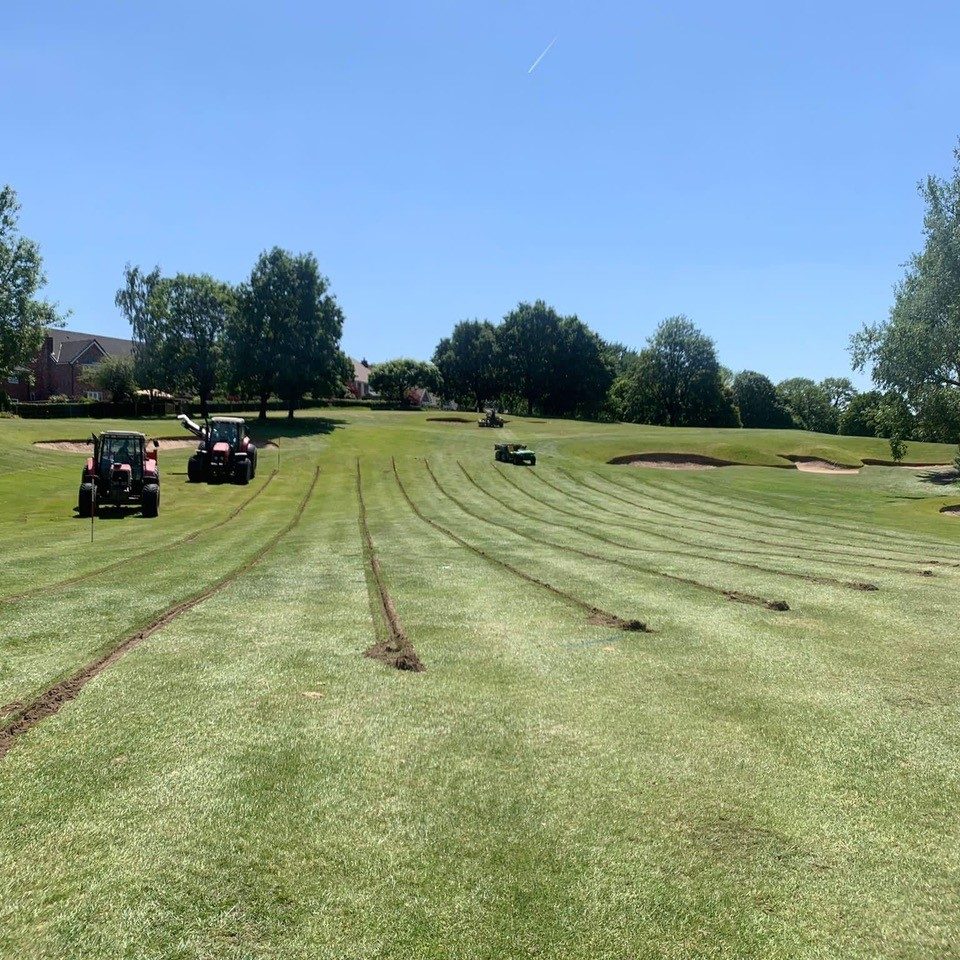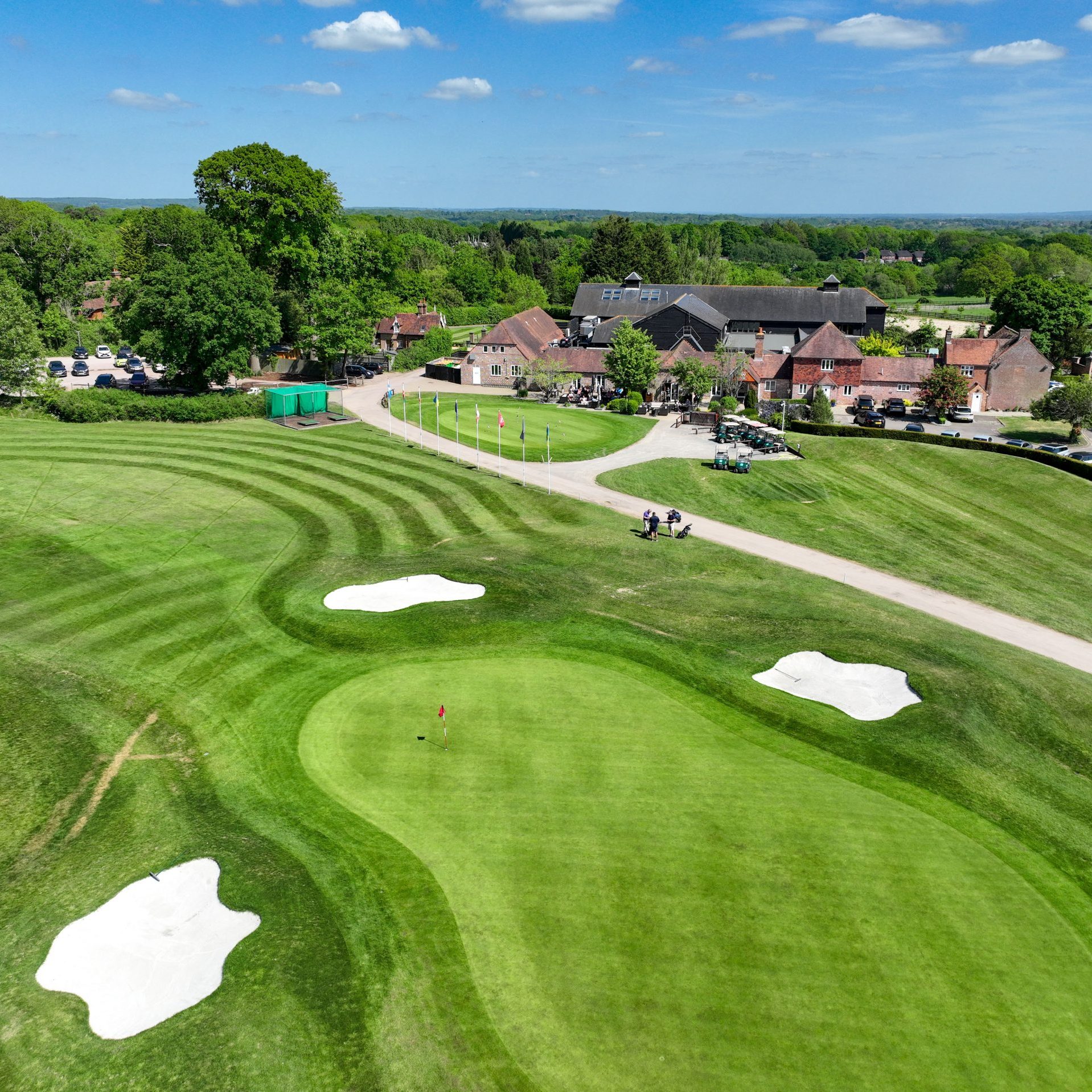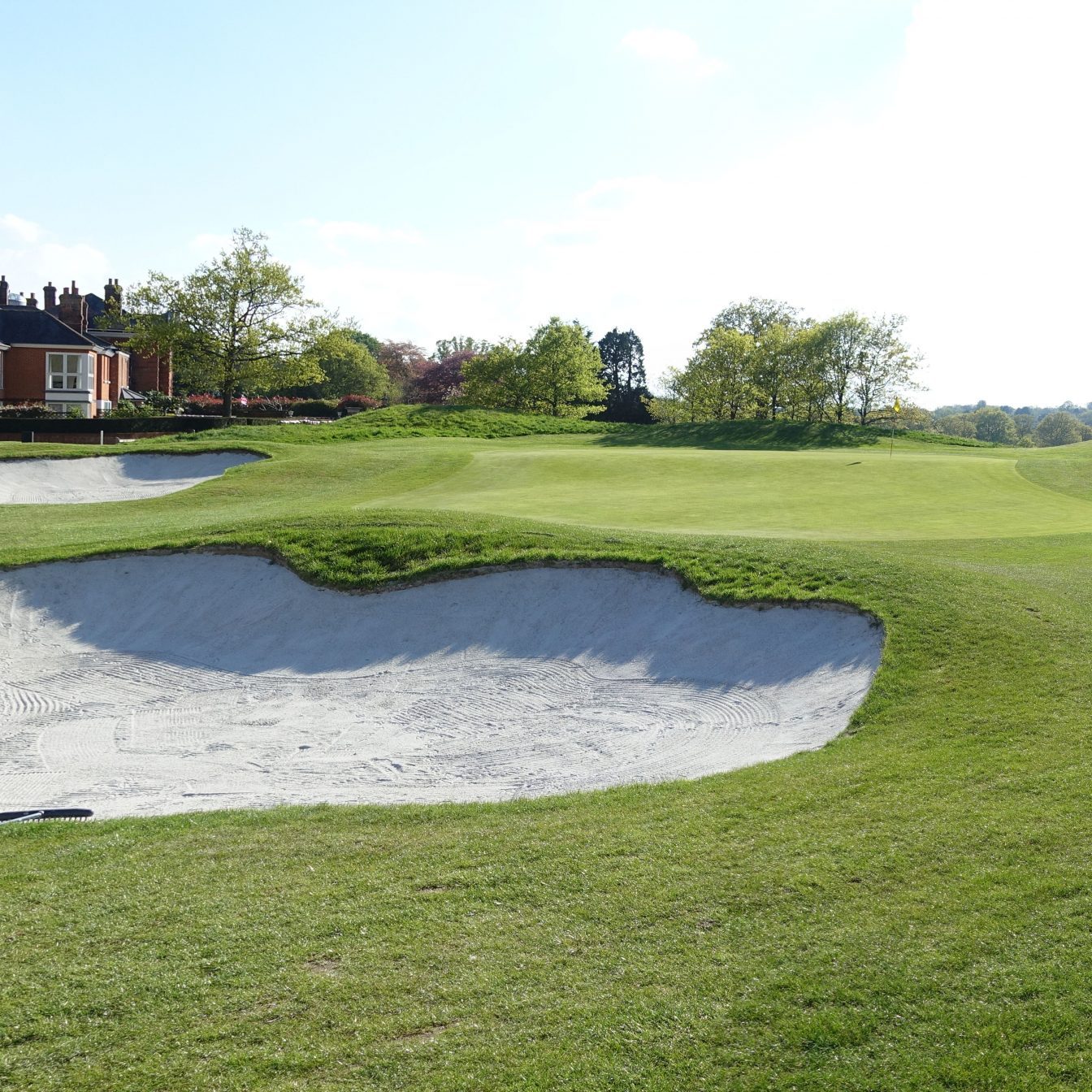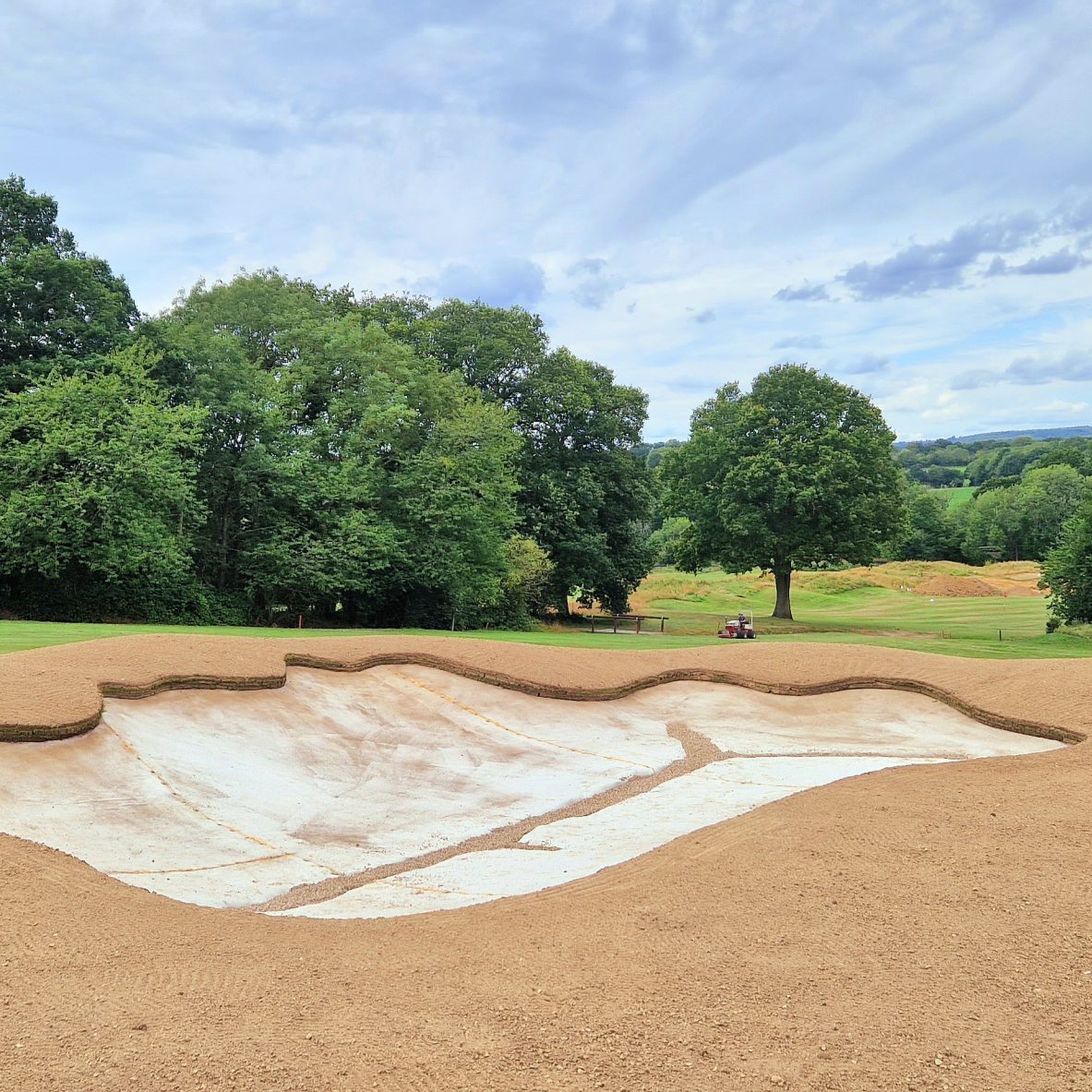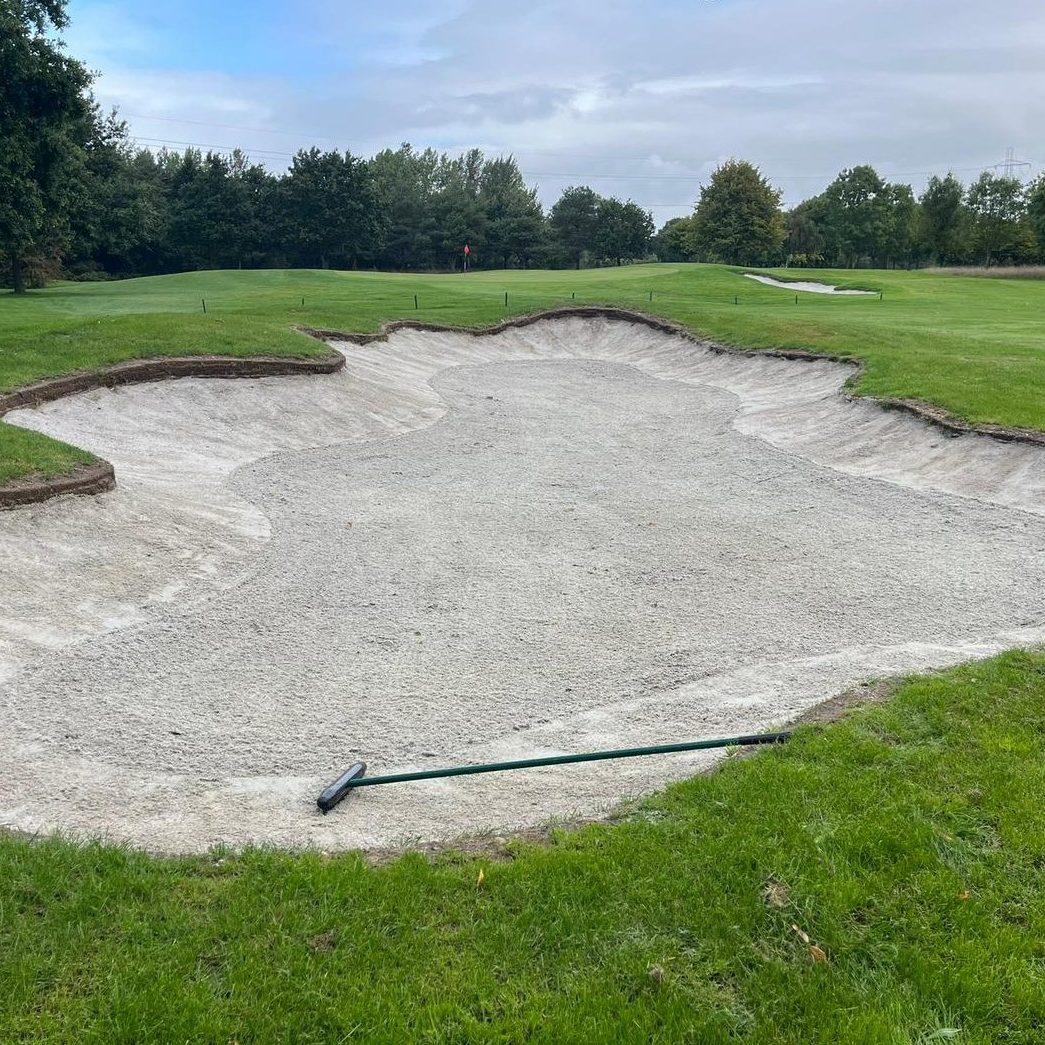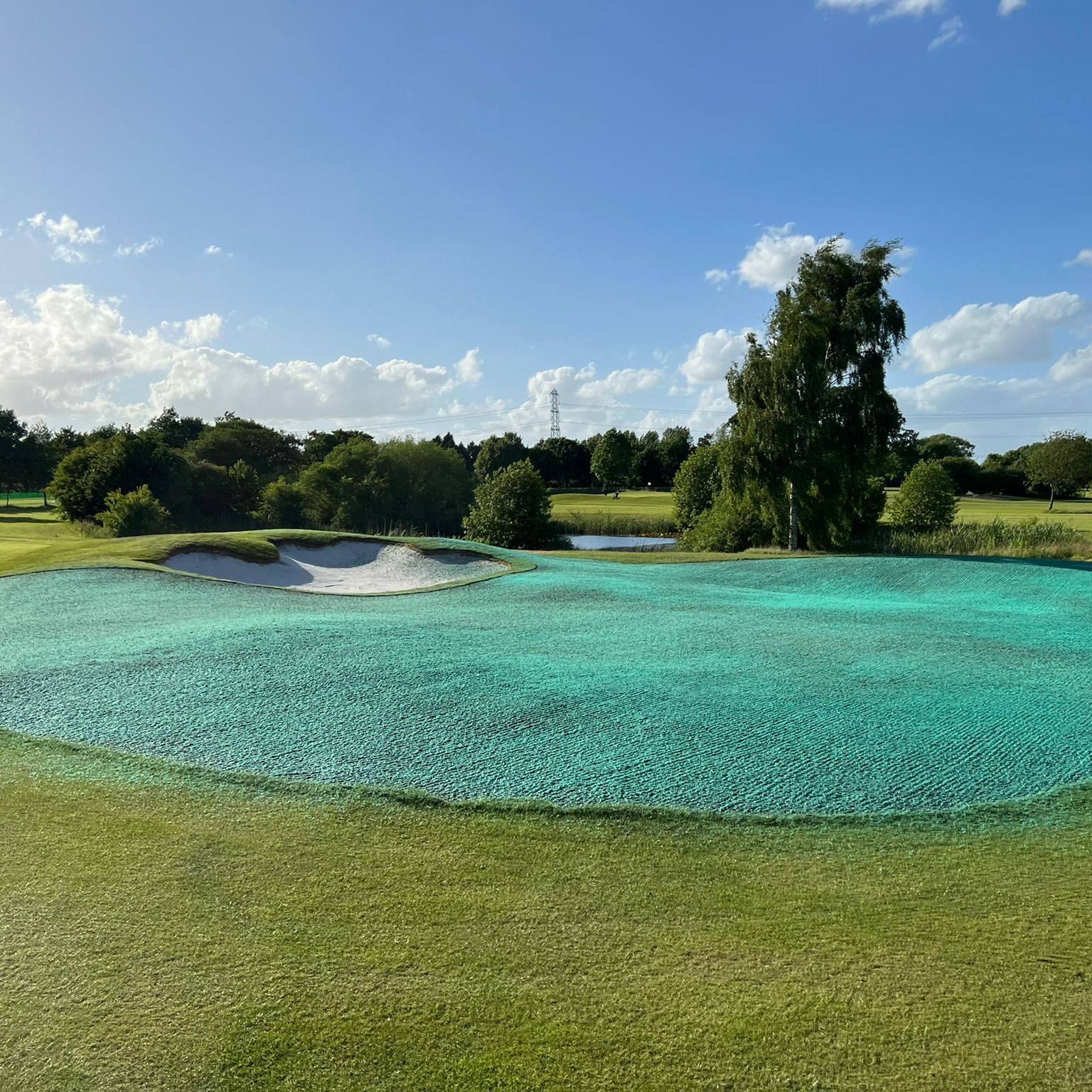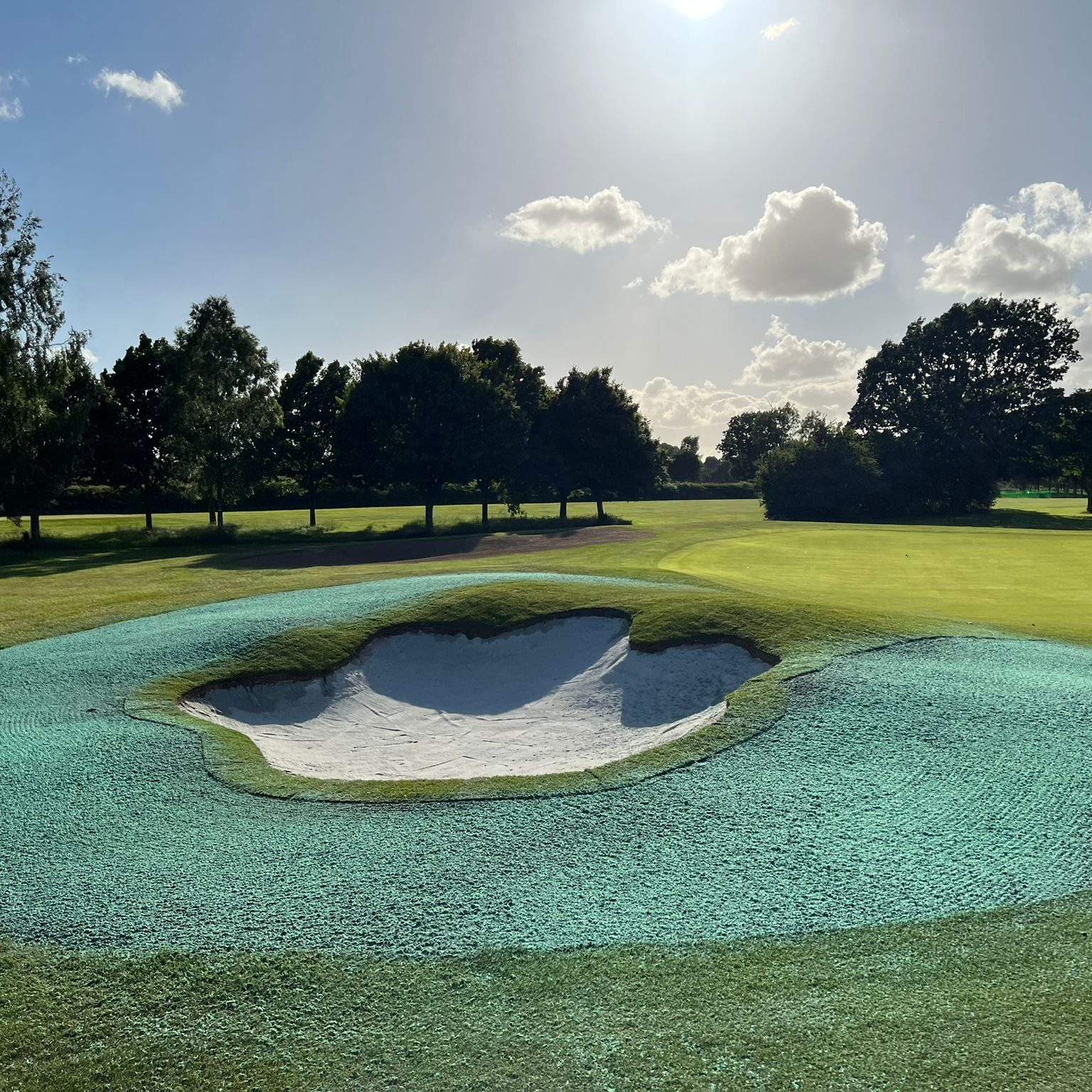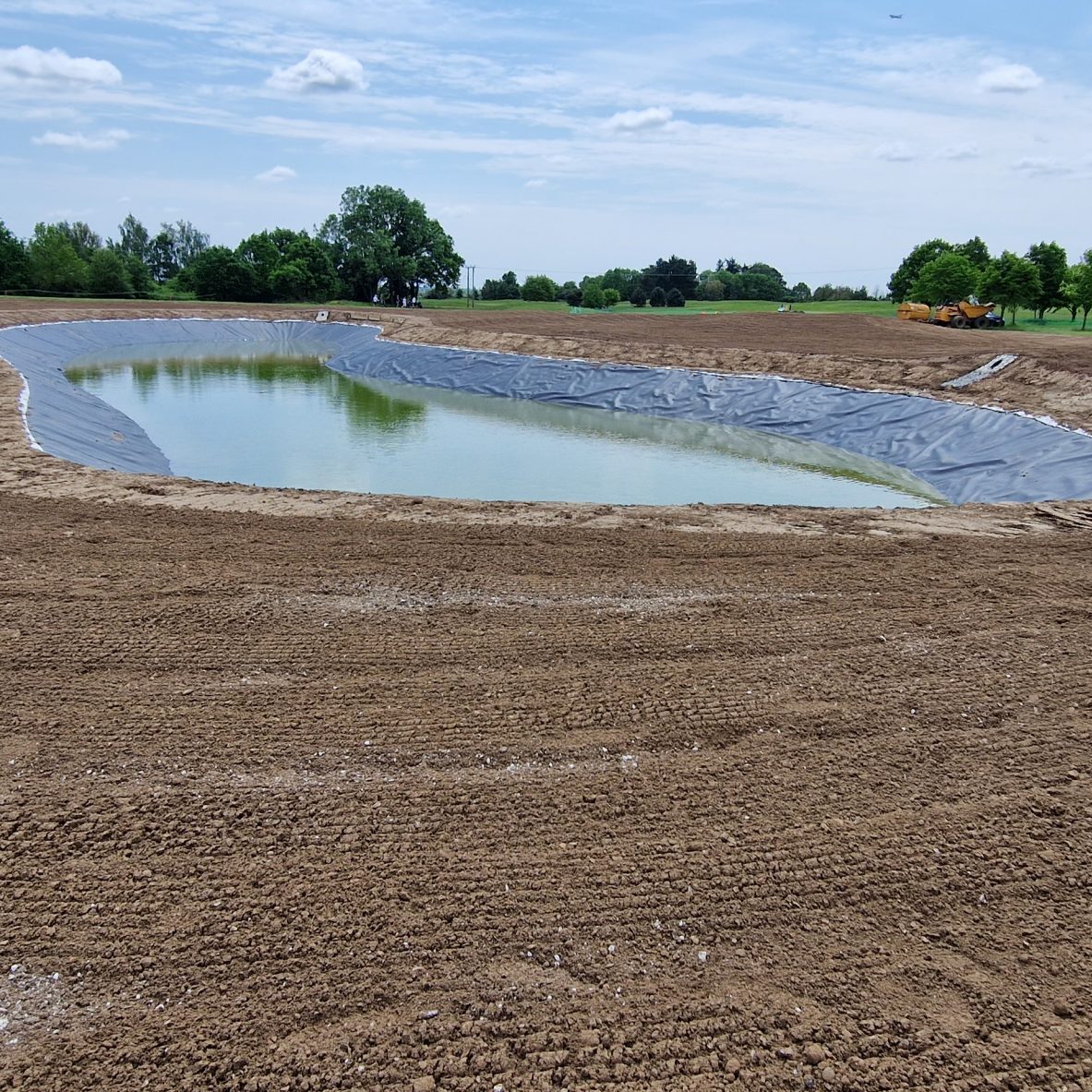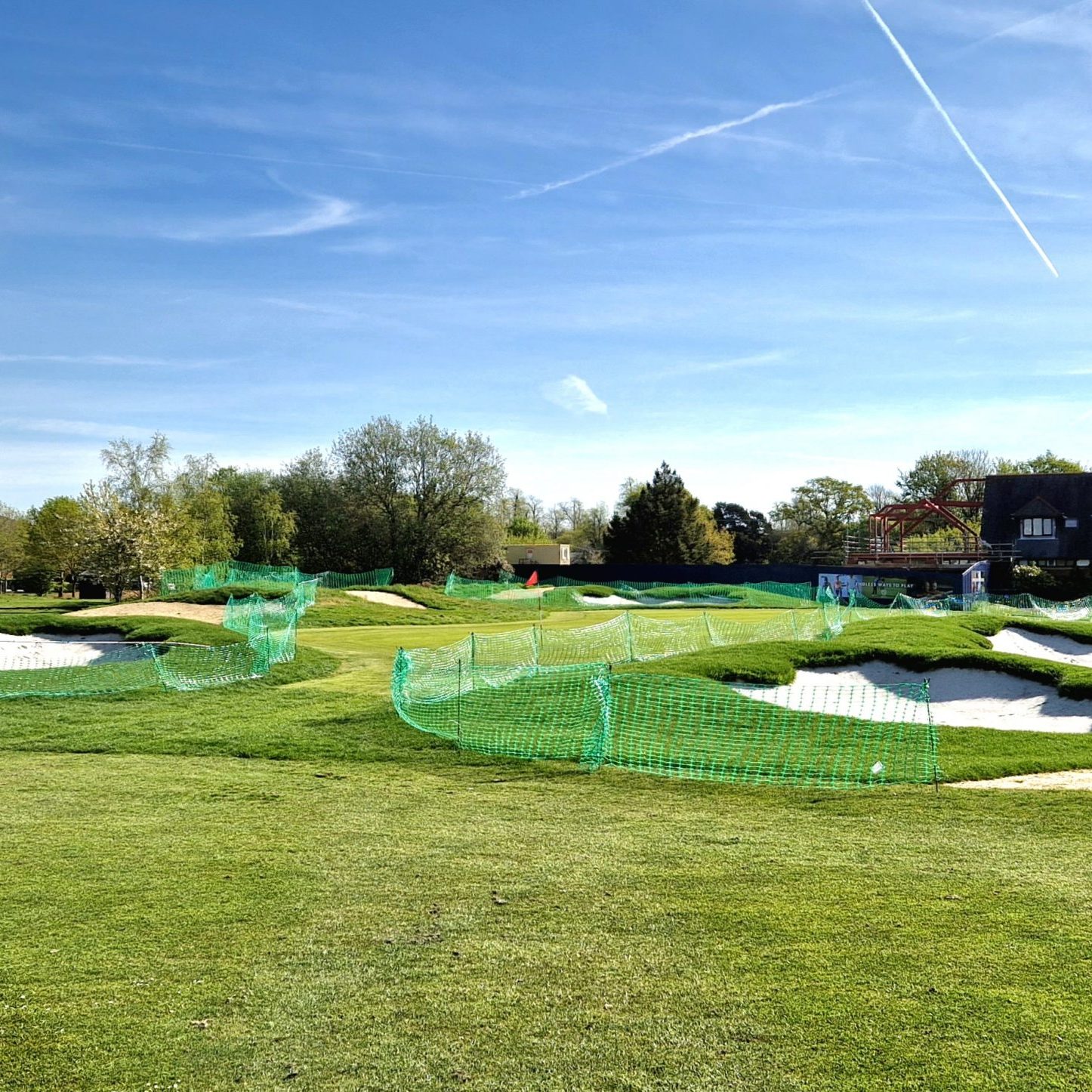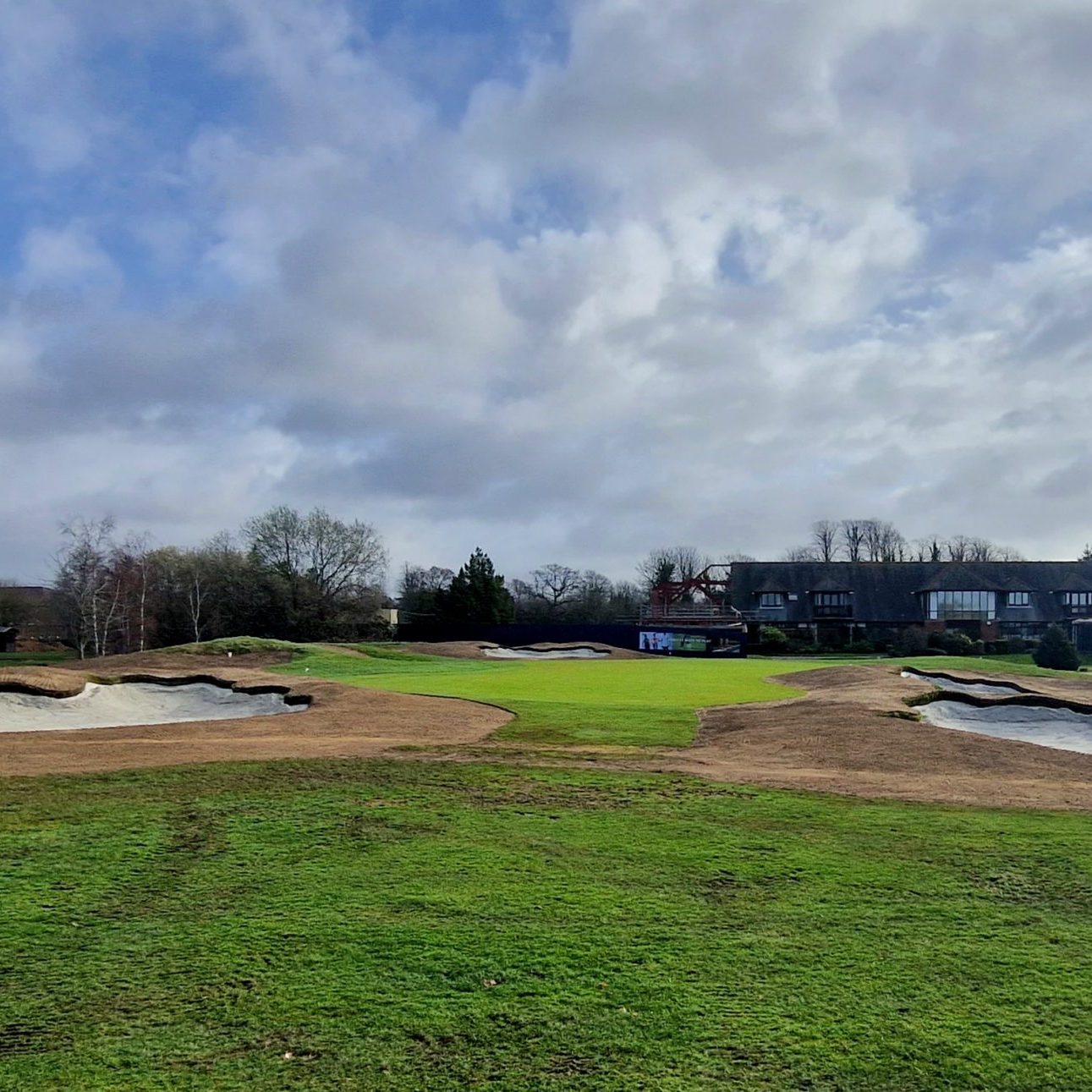At Castle Royle, we completed a new short game practice area in 2021 (Greasley’s undertook the construction work) and this has been very well received by the members and visitors, alike. In 2022, the Club decided to undertake a complete reconstruction of the feature lake on the 13th hole on the Championship Course, originally designed by Neil Coles in 1994, as it was experiencing leaks and the water surface wasn’t visible from the tees. The new lake has a raised water level and, following changes to the fairway approach, is now significantly more visible from the tees, making it a much more influential visual feature, and more importantly, it will retain its water level throughout the year.
At Lichfield we have applied similar principles, but, thankfully, the original design, by Simon Gidman, EIGCA ex-President, was much more refined. In general, the bunker positions were good, if a bit outdated given the advances in technology, but there were too many of them. We have focussed on the rationalisation of bunker numbers and reducing sand areas down in the bunkers we have retained. The new bunkers are raised and designed to be significantly more visible from the tees and landing areas – this strategy pays homage to the work of MacKenzie and Colt and their design principles, which are still as valid and relevant today as they were when they were in the 1920s and 1930s. The visibility of the sand in bunkers is a really important aspect of any bunker remodelling project and it can transform the look of a hole. The advantage of creating greater visibility of the bunkers at Lichfield is that they will have more of a psychological impact upon the golfer playing the course. And, one well-placed bunker can do the job of three badly-positioned bunkers. Phase 1 was completed by Greasley’s in 2021 and Phase 2 starts back on site in September 2023.
At Nizels we have now completed the bunker remodelling programme and the work that has been done by Greasley’s has been extremely well received by members and visitors, alike. The course was originally designed by local tournament professional and ex Ryder Cup player, Paul Way. Our masterplan has focussed on creating a new, more thought-provoking strategy for play, together with the removal of numerous randomly positioned bunkers and replacement of many of them with grassy hollows, run-offs and swales. The setting of the course is impressive with some imposing changes in elevation and terrain – making for some really impressive views from tee to green. We look forward to the new features (and primary/secondary drainage system) coming into play in late 2023.
The Tytherington Club is set in mature, undulating parkland and the course was originally designed by Dave Thomas in the late 1980’s. Our work here has involved the re-working of all holes, which includes improvements to tees, greens, bunkers, drainage, lakes and pathways. The bunkers, in particular, were proving to be difficult and expensive to maintain as they were all large and deep (synonymous with Dave Thomas’s design style) and had not been remodelled (or re-drained) since the course was first built. The first phase started back in 2017 when, working with Greasley’s, we remodelled all bunkers on holes #3, #4, #5, #7, #8 and #18, incorporating drainage improvements. The next phase of bunker work has been a long-time in planning and will restart on site in Spring 2024 and will again, be expertly undertaken by Greasley’s. In order to minimise the disruption to members, a two-phase approach has been adopted for the larger projects. Each phase is, generally, separated by either one or two years. The growing-in period for the bunkers is typically three months, depending on the time of year, however one major benefit of the summer / early autumn works is the ability to hydroseed areas.
John Greasley Ltd, headed by Charlie Greasley, has played a major part in the construction work on all of our Club Company projects. We have developed a close working relationship with Greasley’s over the past 20 years and thoroughly trust them to carry out multiple course improvement schemes to an extremely high quality.
Gaunt Golf Design is responsible for the design, masterplanning and overseeing works on site. We operate a ‘hands- on’ approach on site, from marking our bunkers / features on the ground, spraying sand lines / overseeing alterations on site, through to the final signing off of the finished works. A well-practiced system of communication, knowledge and expertise is in place between us and all construction teams at Greasley’s.
Pivotal to implementation of the works from the club’s side has been longstanding group course manager, Chris Brook (‘Brookie’) and has worked for the Club Company since its inception and his wealth of knowledge specific to each course is unprecedented. Chris is closely involved in each project, operating an on-the-ground approach to supervising the works, liaising with us (the architect) and keeping lines of communication open with the Club’s management throughout the growing-in period. To develop this good relationship between the club’s key staff, architect and contractor is essential.
It is great to be able to support The Club Company with bold investments in their facilities, with a view towards ensuring their venues are future-proofed and in great shape moving forward.
JG
23.08.23.

